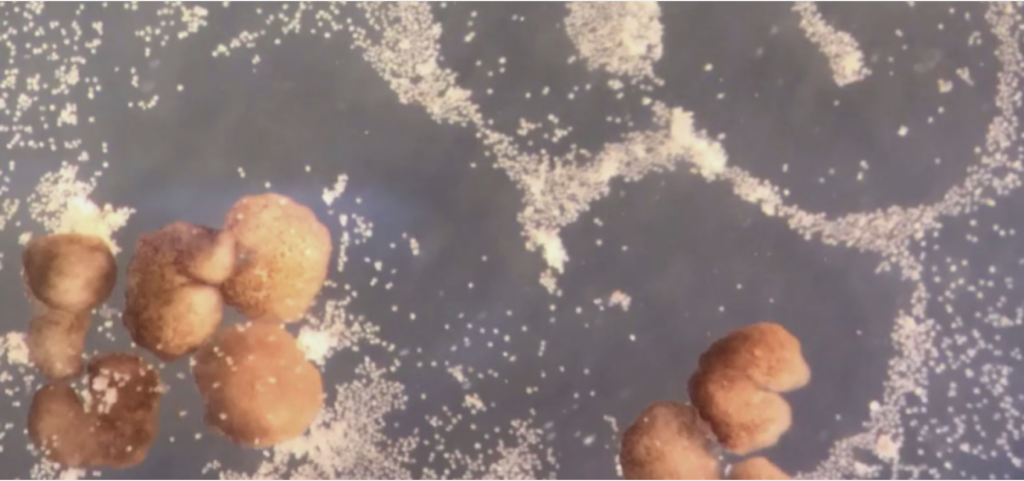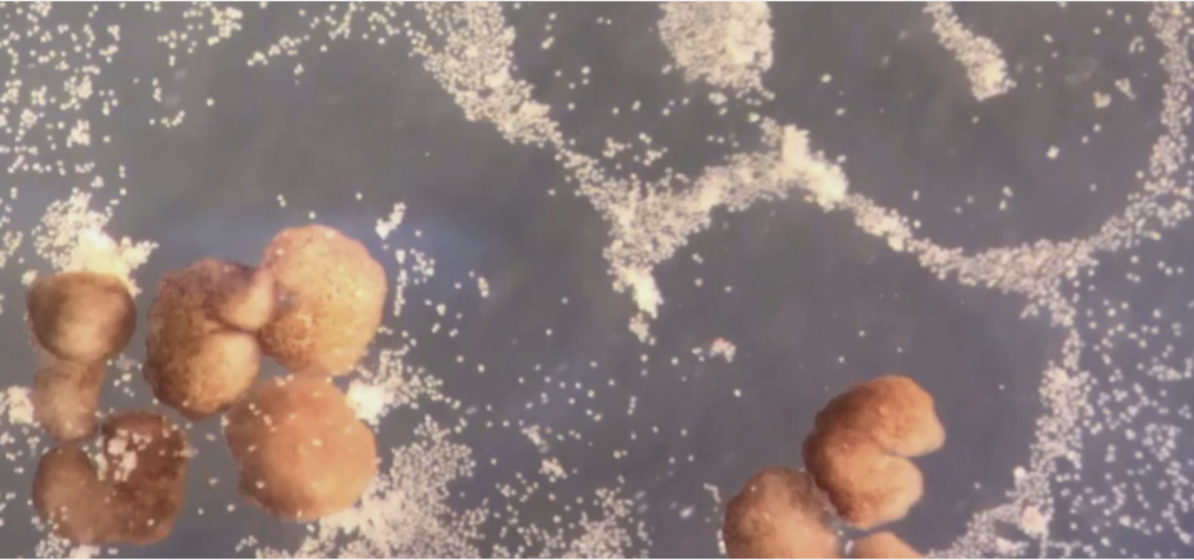
Xenobots, created by scientists from frog cells, can self-replicate. (Source: research scientists Doug Blackiston and Sam Kriegman)
Team of Scientists Discover Frog Cells Can Replicate, Play Role as Research Tool
Researchers at the University of Vermont, Tufts University, and the Wyss Institute for Biologically Inspired Engineering at Harvard University announced a new form of biological reproduction, used to create self-replicating living robots. The report from the Wyss Institute summarized:
“The same team that built the first living robots (‘Xenobots,’ assembled from frog cells—reported in 2020) has discovered that these computer-designed and hand-assembled organisms can swim out into their tiny dish, find single cells, gather hundreds of them together, and assemble ‘baby’ Xenobots inside their Pac-Man-shaped ‘mouth’—that, a few days later, become new Xenobots that look and move just like themselves.”
Scientists learned in earlier experiments that Xenobots could be designed to achieve simple tasks, but were amazed that they could spontaneously replicate. But this may just be the beginning since they’re exploring what the organisms could be trained to do.
“We’ve discovered that there is this previously unknown space within organisms, or living systems, and it’s a vast space,” says Joshua Bongard, Ph.D., a computer scientist and robotics expert at the University of Vermont who co-led the new research. “How do we then go about exploring that space? We found Xenobots that walk. We found Xenobots that swim. And now, in this study, we’ve found Xenobots that kinematically replicate. What else is out there?”
While the results are unique, a story on arstechnica.com disputes that it is as earth-shattering as the scientists make it out to be, noting that “the copies need help from humans to start moving on their own, are smaller than the originals, and the copying process grinds to a halt after just a couple of cycles.” The “living robots” described in a CNN report were originally written about in a research paper back in March.
Using an AI program within the Deep Green supercomputer cluster at UVM’s Vermont Advanced Computing Core, scientists from the universities developed the evolutionary algorithm to test billions of body shapes in simulation to make the cells better at motion-based “kinematic” replication. A Pacman shape worked best.
“It’s very non-intuitive,” said Sam Kriegman, Ph.D., the lead author on the new study, who completed his Ph.D. in Bongard’s lab at UVM and is now a post-doctoral researcher at Tuft’s Allen Center and Harvard University’s Wyss Institute for Biologically Inspired Engineering. “It looks very simple, but it’s not something a human engineer would come up with. Why one tiny mouth? Why not five? We sent the results to Doug and he built these Pac-Man-shaped parent Xenobots. Then those parents built children, who built grandchildren, who built great-grandchildren, who built great-great-grandchildren.” In other words, the right design greatly extended the number of generations.
A video of a Zoom meeting between the scientists discussing the discovery gives an inside look at what they have achieved.
read more at wyss.harvard.edu








Leave A Comment